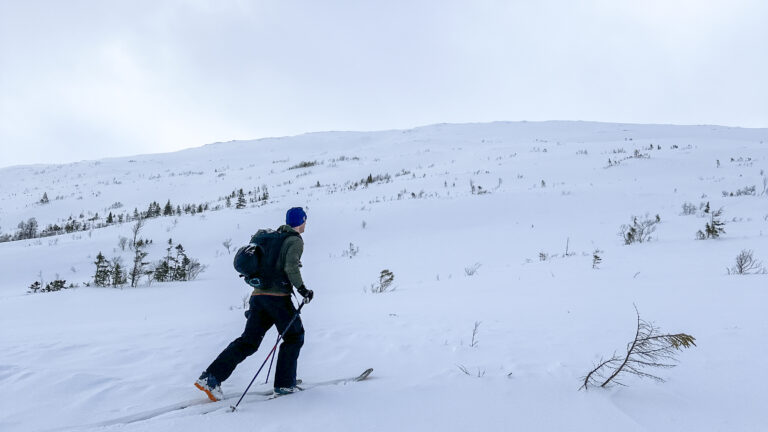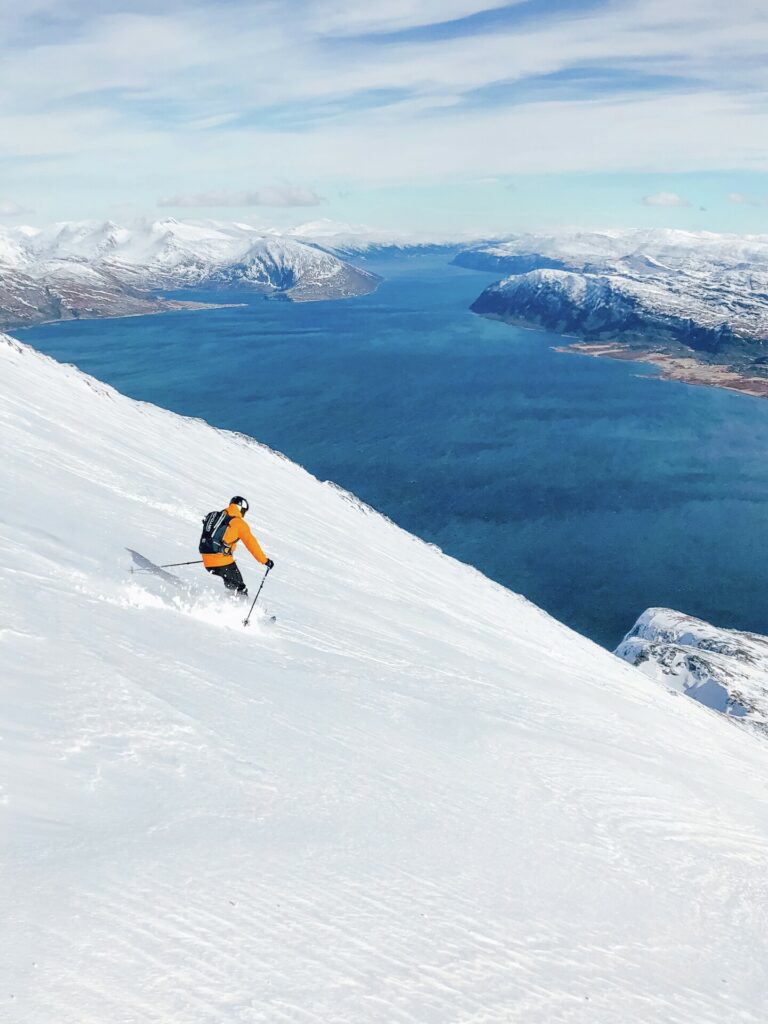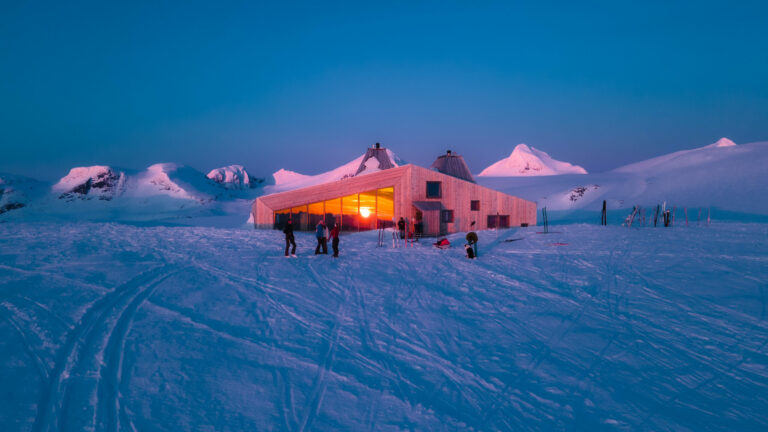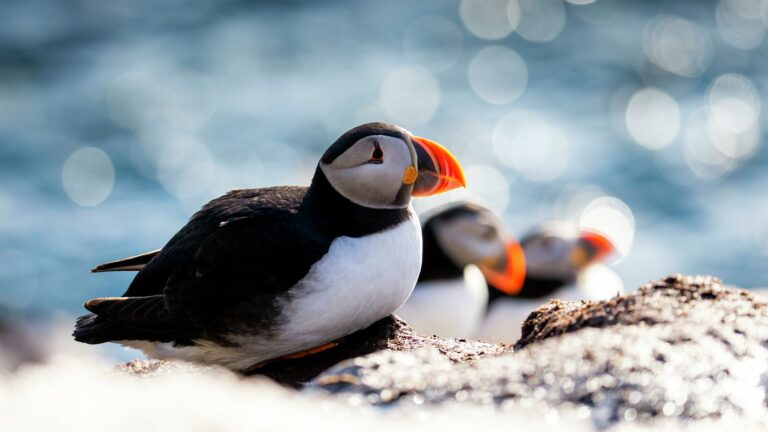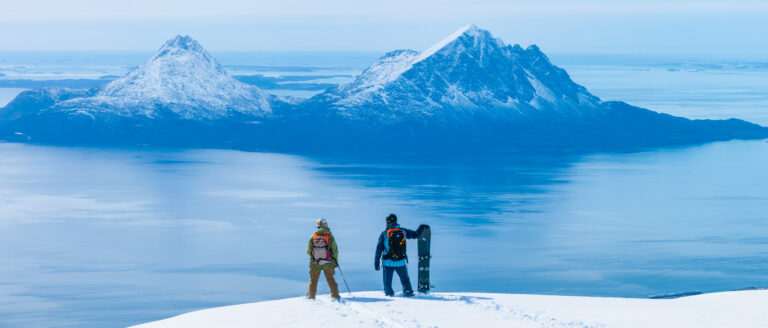A hiking adventure: Summit hike to Dønnamannen
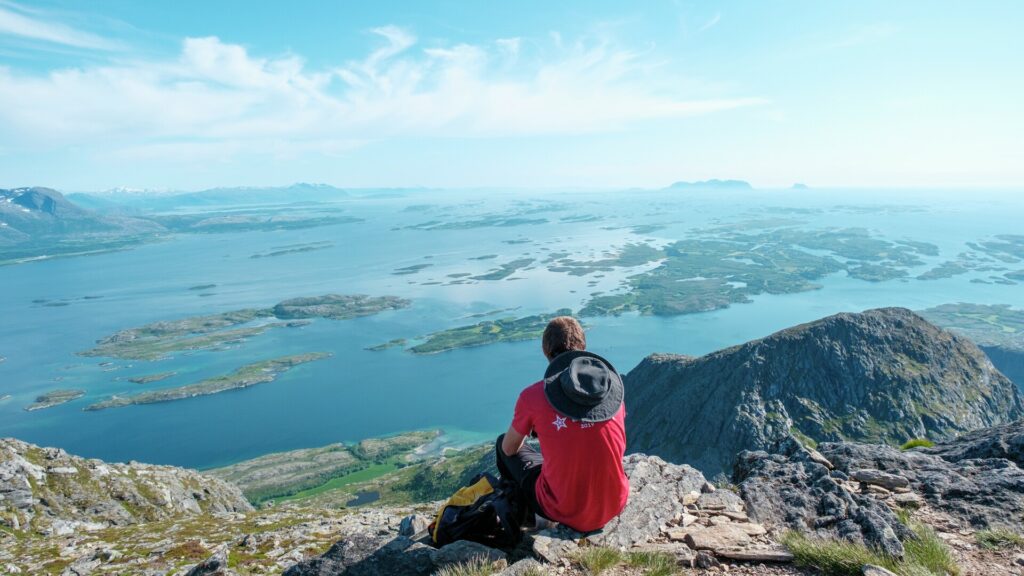 Kristoffer Møllevik / Visit Helgeland
Kristoffer Møllevik / Visit Helgeland
The view from the top of Dønnamannen (858 m), a mountain on the island of Dønna off the town of Sandnessjøen, is quite simply breathtaking. It’s a panorama that you can enjoy for many hours. However, the summit hike is very demanding, and is only recommended for experienced mountain hikers.
Key info
Degree of difficulty: Extremely demanding. The path is very steep and can be slippery after rain. The trail is poorly marked in places; using a GPS is recommended.
Distance one way: 4.5km
Ascent one way: 858 m
Duration one way: about 3 hours
Trailhead: The route on the map (point A to B) shows the journey from Breivika, which is the easiest starting point from Dønna. If you are coming from Herøy, it’s easier to start from Einvika.
Find parking and the trailhead in Breivika in Google Maps
Find parking and the trailhead in Einvika in Google Maps
Go with a guide:
Herøy Kayak & Bike offers guided tours to Dønnamannen
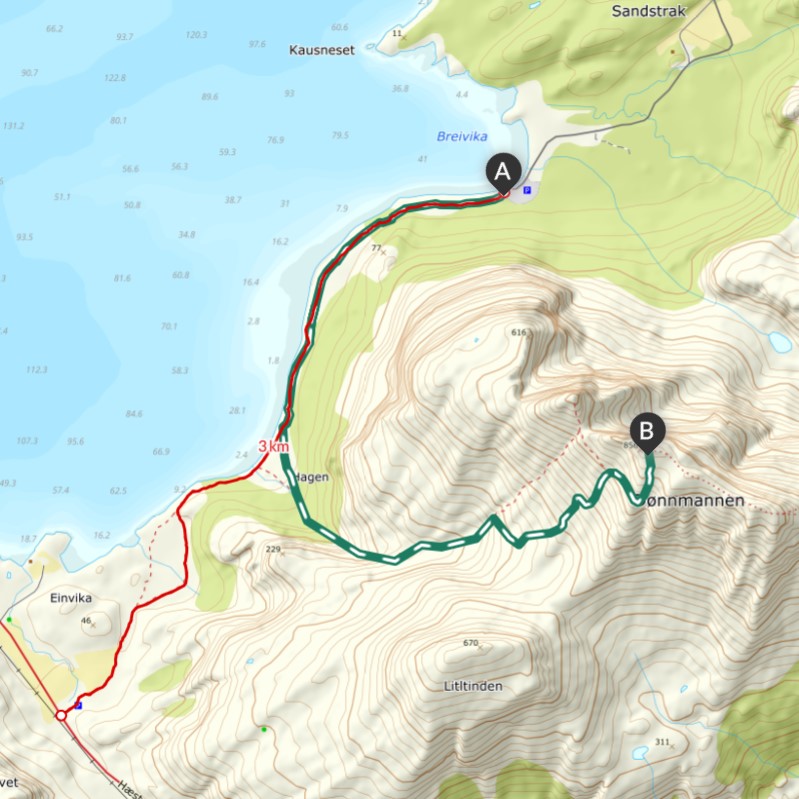 UT.no / Norgeskart
UT.no / Norgeskart
A hiking adventure
This renowned mountain is a tempting destination for those yearning for a challenge. Many hikers consider Dønnamannen to be just as challenging as the most difficult peaks of the Seven Sisters. This hike requires that you be used to rough mountain wilderness, and that you don’t suffer from vertigo.
From the trailhead at Breivika beach, the first kilometre of your hike passes through flat terrain, before starting a serious climb that is steep all the way to the top. The hiking trail follows a stream through the forest for 400 metres before reaching a small plateau. This is a good place to refill your water bottles.
Dønnamannen looks like the face of a man lying on his back – and indeed, according the legend, the “Dønna man” is lying on his back, taking a nap next to the Seven Sisters. The mountain actually consists of three peaks: Nasen (the nose), Leppa (the lip) and Haka (the chin), with the Lip protruding highest. The most popular peak is the Lip, but once you’re up there you might well consider visiting all three. At the summit, your reward is a stunning panorama of large swathes of the Helgeland coast.
You must exercise the utmost caution! The rock can be slippery when wet. Also note that at several points you are very close to the precipice, so be sure to stay on the trail. And do remember that here on the coast, the fog can arrive suddenly, drastically reducing your visibility.
1. Follow the Norwegian Mountain Code and plan according to your ability and equipment
Short hikes on easy terrain don’t require much. If you’re heading out for an hour or two in the lowlands and not gaining much elevation, you won’t need a lot of gear or be in top shape. If it gets cold or you get tired, you’re usually not far from your car.
But if you’re heading into more challenging terrain—steeper, rougher, and above the treeline where the weather is more unpredictable—you’ll need to be better prepared. You should plan the trip based on weather and conditions, be fit enough to complete it, and be ready for uneven ground, boulder fields, slippery roots, and stream crossings. That means carrying a heavier pack with extra clothes and gear, and wearing sturdy hiking boots that support your ankles.
If you’re unsure about taking on a demanding mountain hike, start with an easy or moderate one and see how it feels.
Learn more about the Norwegian Mountain Code at rodekors.no
See what you should bring on your hike on VisitNorway.com
2. Stick to marked trails
A shortcut through unfamiliar terrain can easily turn into a long and difficult detour. What looks like a trail might just be a sheep path that leads you somewhere completely unexpected. If you want the hike to be as easy or challenging—and as long or short—as planned, it’s best to follow marked trails.
If you’re heading off-trail, it’s smart to follow a GPS track. You can download a GPX file from a hike description and use it on a GPS device, a smartphone app, or a GPS watch.
UT.no and the UT app offer hike descriptions with GPS tracks. If your hike doesn’t have one, you can upload a track to ut.no/mine-turer and access it in the app. It’s free, but you’ll need to create an account.
Always carry a map and compass as backup.
UT app for Android / UT app for iPhone
3. Talk to locals or join a guided hike
Locals often have useful tips about your planned hike. They can tell you where to park, whether there’s phone coverage, if the trail is wet, if rivers are high, or suggest a better alternative. Talk to the people where you’re staying, at the local tourist office, or other hikers on the trail—you might get some truly valuable advice.
The best option is to hike with a guide. You can join a group tour or book a private guide. These are experienced locals who know the area well. They’ll help tailor the hike to your needs and share insights that add to the experience.
4. Look out for cultural landmarks
Even high up in the mountains, you’ll find traces of past human activity—some hundreds or even thousands of years old. These can include ancient trail markers, signal cairns, hunting fences, huts, and shepherd shelters. If you spot something interesting, check the KulturPunkt app to see what it is—or use the app to find a cultural site as your hiking goal.
KulturPunkt app for Android / KulturPunkt app for iPhone
KulturPunkt.org
5. Remember your responsibilities under the Right to Roam
Norway’s Right to Roam means you can hike, bike, pick berries, camp, fish, and ski almost anywhere in nature. But it also comes with responsibilities—what we call the “duties of the Right to Roam.” Leave no trace, respect wildlife, and know the rules for hunting, fishing, cycling, and access in protected areas like national parks and nature reserves.
Read more about the Right to Roam and your responsibilities at VisitNorway.com
Thank you for respecting the local communities, and for helping us preserve the natural beauty of Helgeland!
Please:
- Strive to leave no trace of your visit. Bring back all your rubbish, including used toilet paper, and discard it in the nearest rubbish bin.
- Plan your toilet visits and use the opportunity when you pass a toilet. In the wilderness, make sure you are not a nuisance to others.
- Respect the local wildlife. Keep a good distance from wildlife, livestock and birds. Keep your dog leashed.
- Respect private property. Keep a respectful distance from houses and cabins.
- Show good boating sense. Keep a good distance from shore and drive at a low speed, especially when you are close to anyone or anything on the water, including birds or animals. Avoid loud and disturbing engine noise. Be aware that some islands and nature reserves are important nesting sites, and that going ashore is prohibited during the nesting season.
- Follow the Norwegian Mountain Code (Fjellvettreglene). Plan your excursion according to the weather forecast, your skills and experience.
- Join a guided excursion or consider hiring an experienced guide, especially when you don’t have sufficient experience or knowledge to guarantee a safe trip.
